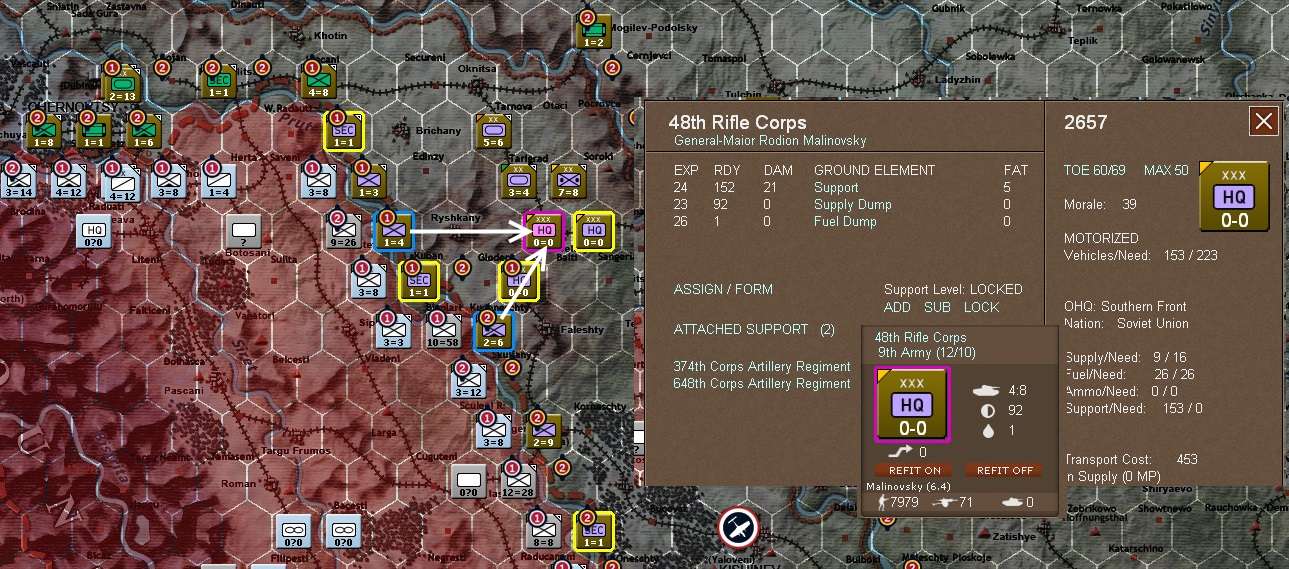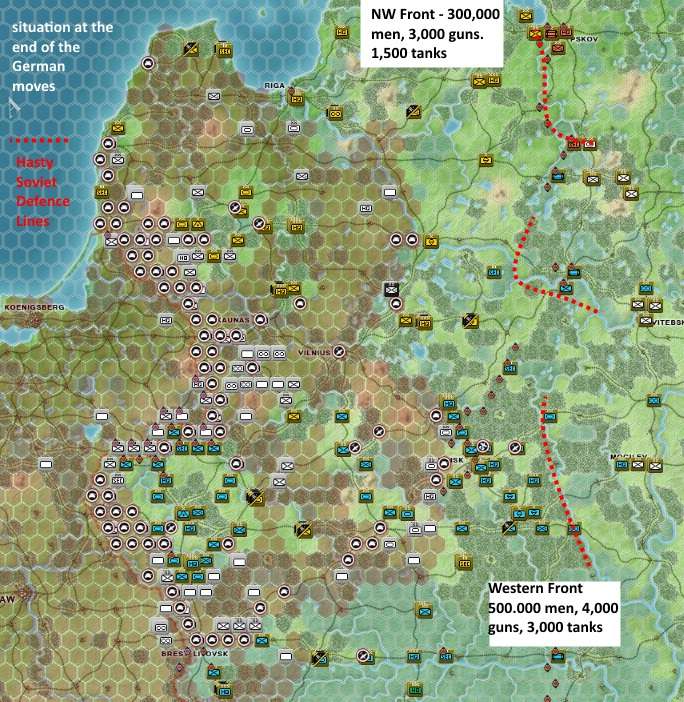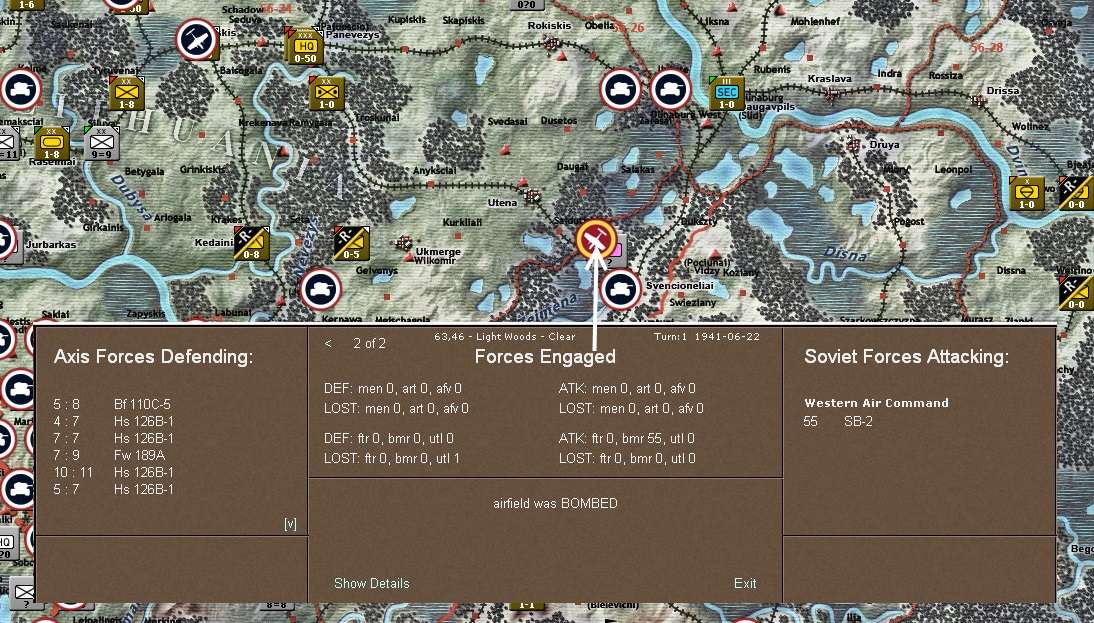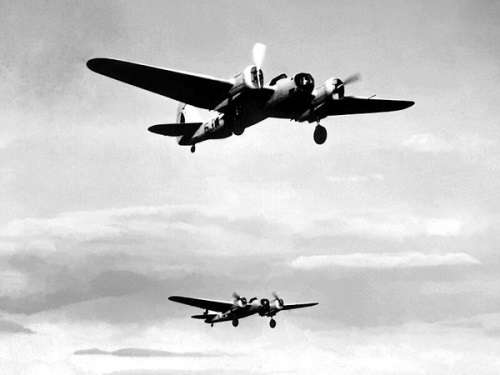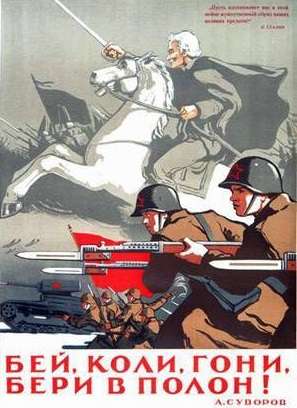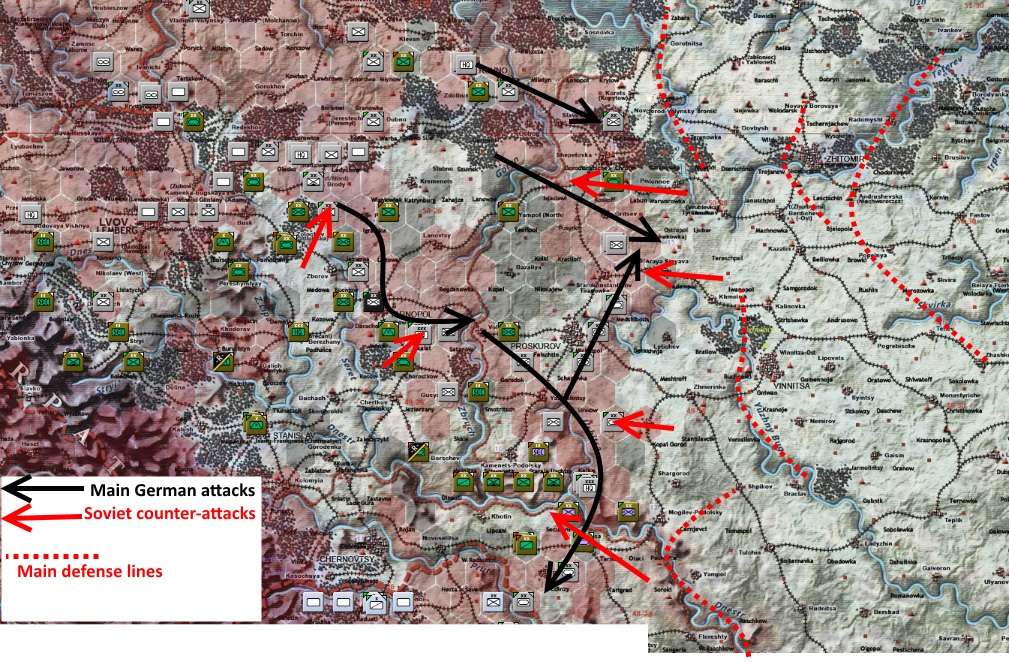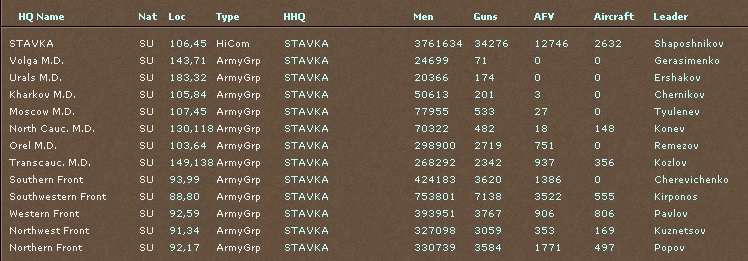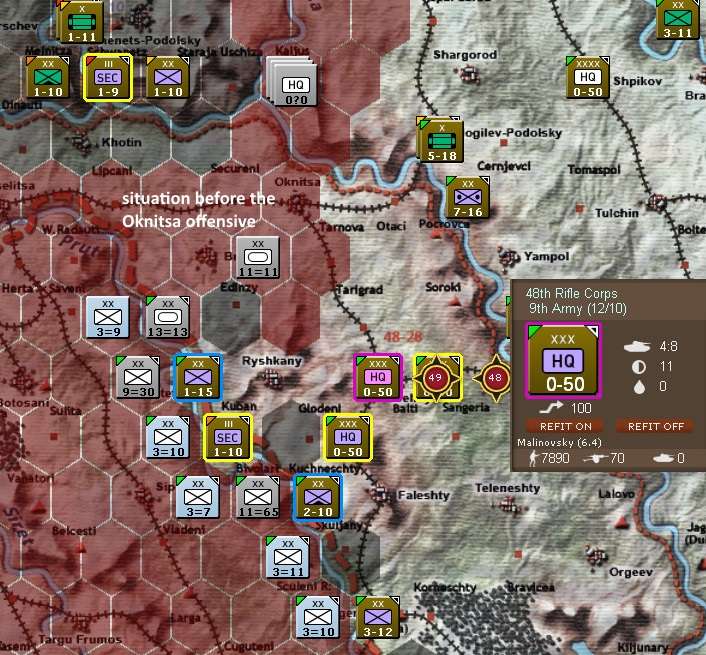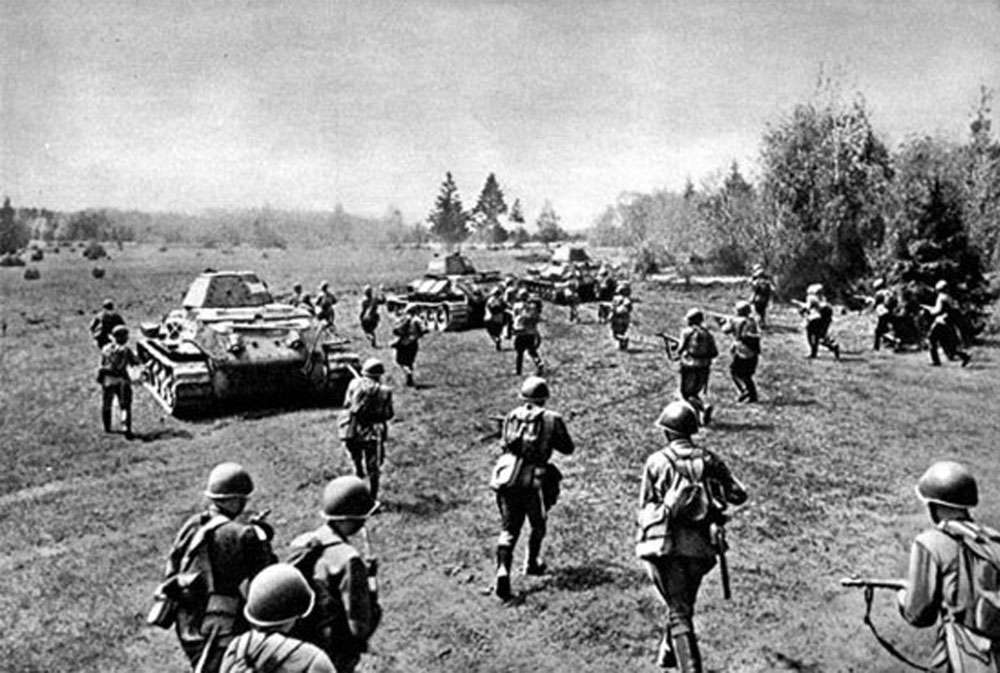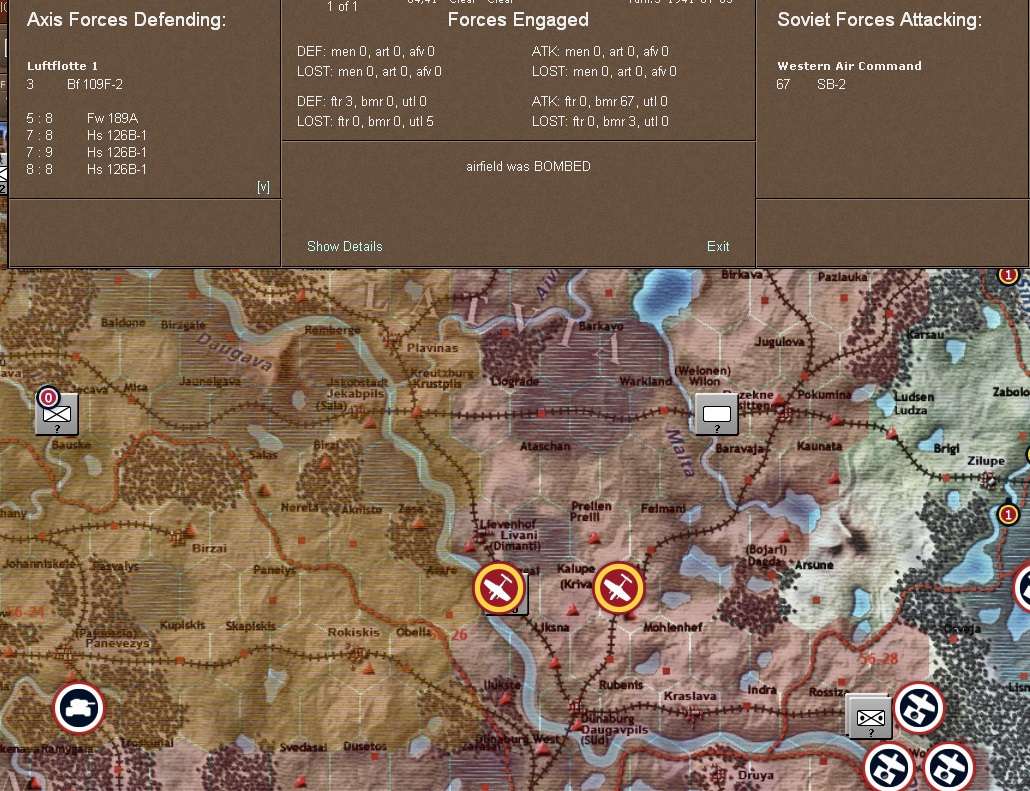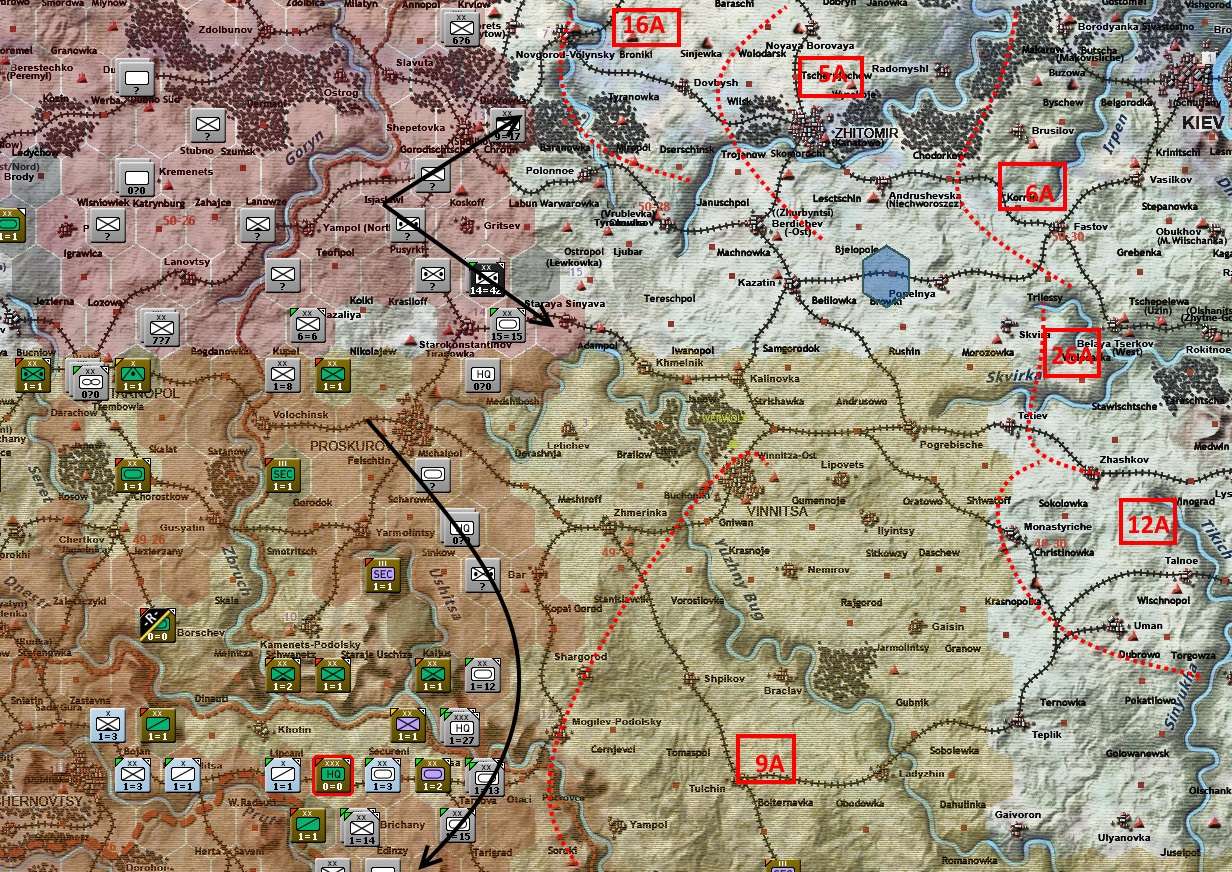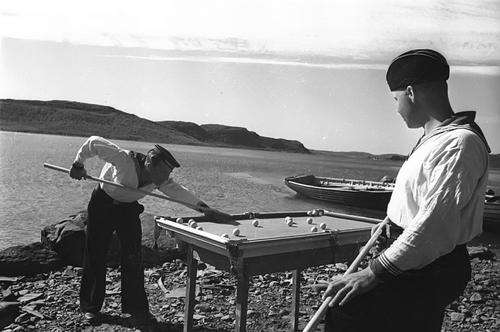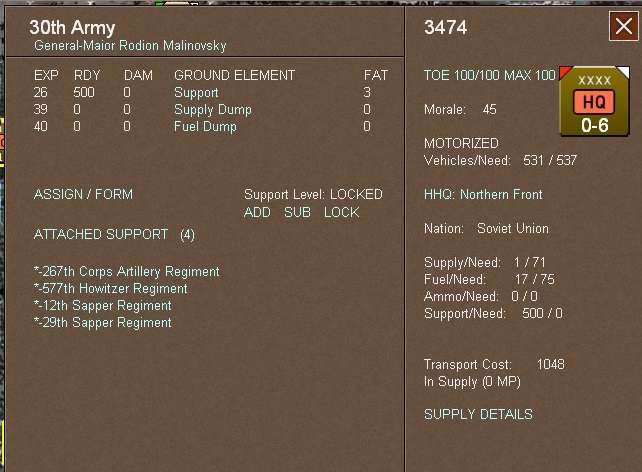Turn 4: 10-16 July 1941
On 10 July the last quiet sector of the Soviet Union's western borders erupted into conflict as the Finns joined the war. Their initial attack fell on the sector to the north of Lake Ladoga forcing back the Soviet border formations but at most pushing 20 miles into Soviet territory.
In the meantime Stalin set about finding scapegoats for the disasters of the last three weeks. Since Western Front had been all but destroyed in the border battles, Pavlov became the most prominent victim with his command being taken over by Timoshenko. This set in train a series of moves among the senior commanders with Zhukov taking control of the newly operational Stavka and Konev being transferred from the Caucasus to take control of the freshly raised Reserve Front.
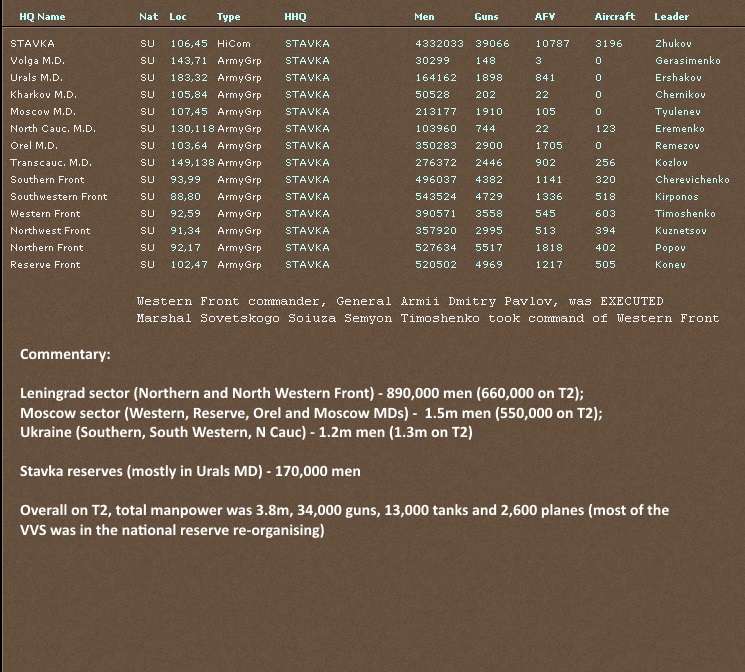
On the battlefields, the Germans made limited progress giving Stavka the chance to allocate reserves to key sectors and continue to evacuate industrial capacity from threatened cities.
In the north, Pskov was encircled but the hasty Soviet defence lines either side of Lake Ilmen were left unchallenged. Soviet estimates were that the Germans had split their forces with 56 Panzer Corps moving mostly unchallenged through Estonia and 41 Panzer involved in the Pskov battles.
In response, a hasty line was constructed along the Luga under the command of 30 and 33 Armies while 23 Army took control of the defence of Leningrad itself.
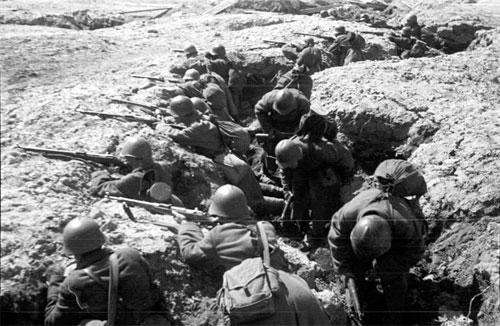
(Soviet defensive positions near Novgorod)
27 and 8 Armies from North Western Front held the south side of Lake Ilmen and had created a weak line along the Shelon to delay any German attempt to directly attack Novgorod.
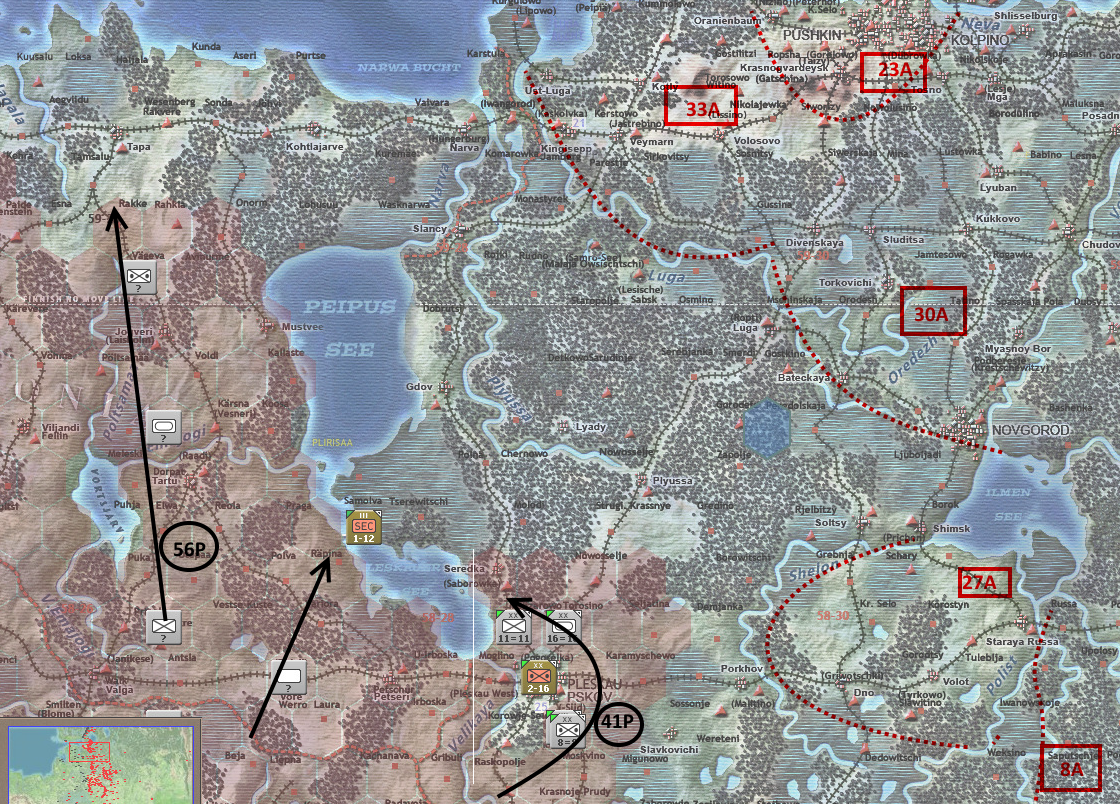
[1]
In the centre, the Germans moved up to a line from Vitebsk to Mogilev but made no effort to either force the Dnepr or push towards Smolensk.
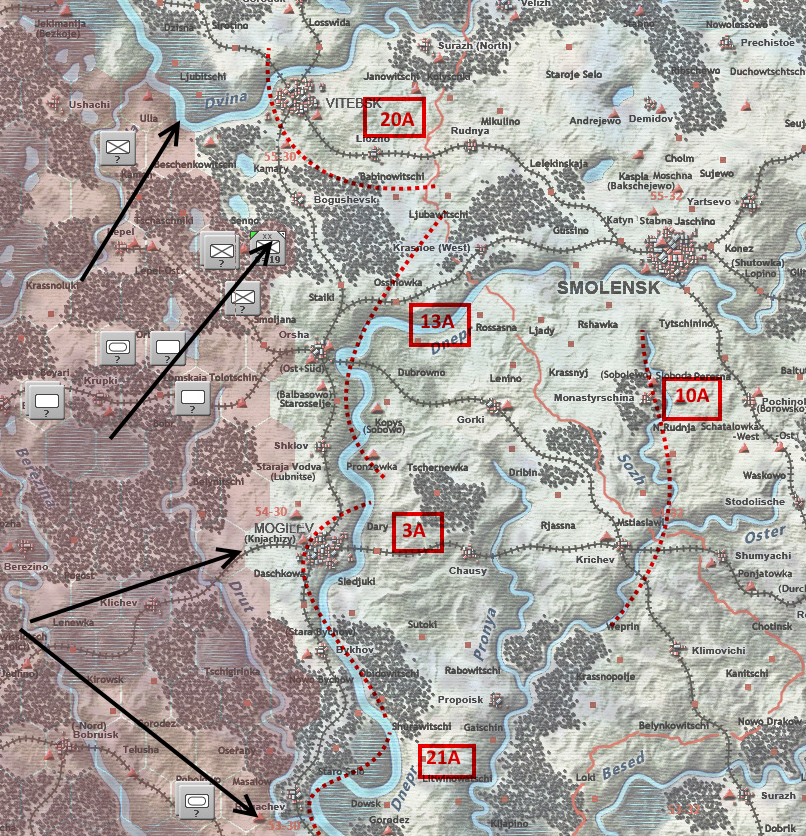
However, with the roads now dry after last weeks rain, the Ukraine saw more sustained fighting. The bulk of 16 and 26 Armies were caught in the Zhitomir-Vinnitsa pocket while the battered remnants of South Western Front fell back on Kiev and prepared the defend the Dnepr crossings. Starved of replacements, Kirponos was ordered to hold the river line at all costs to protect the industrial regions of Kharkov and the Donets.
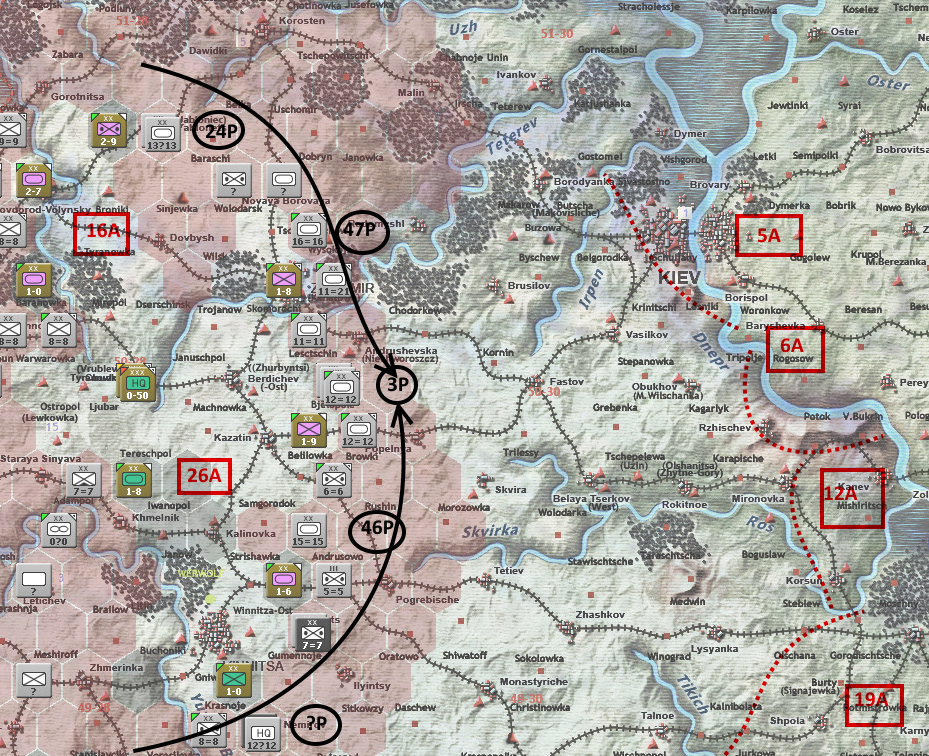
In the air, the VVS continued to launch a number of counterblows.
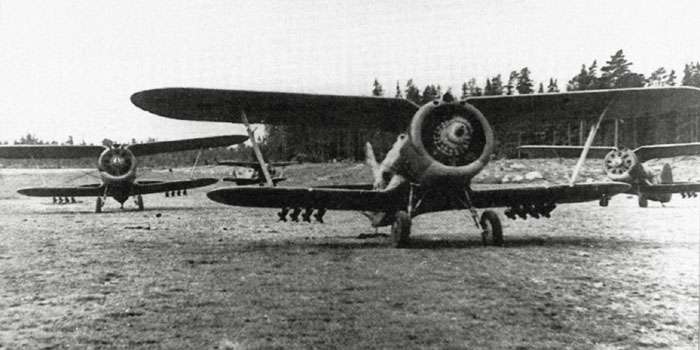
(I-153s in action near Pskov)
This ranged from interdiction of German armour to a sustained attack on the airbases the Germans were using for resupply and reconnaissance. Although the results were mixed, the morale impact of taking the initiative was substantial.

[2]
After almost 4 weeks of constant fighting, the Soviets had lost over 900,000 men (660,000 taken prisoner in the border battles) with this offset by the same number of replacements leaving the overall army at 4.3 million. However, losses in tanks (almost 8,000) and aircraft (4,600) had not been replaced. Axis losses in the same period were 55,000 men, 210 tanks and 150 aircraft.
However, although the notional strength of the Red Army had been maintained, there had been a significant shift of manpower from the Ukraine to defending Moscow and Leningrad.
[1] – playing around with various ways to layer the game map and comments, these are made using two layers. The first is a map with no unit images merged with a map with German units (& mine if they are in pockets). I've lowered the opacity of this so its a bit blurred. The second has lines, arrows and text etc, made a bit more bright than the default setting. Not sure if it works though?
[2] - I'm going for recon assets as from my last PBEM it appears the Germans can start to run out of these given ongoing attrition and heavier losses as the VVS gets better fighters. In this game, vigabrand is pushing the Army bases up to the front to improve his resupply. There's not much I can do about that directly but at this stage these bases are then well in advance of fighter cover (well mostly ... ahem). From about T6 I'm seeing the Luftwaffe being much more cautious in its deployments to exposed advanced airbases.








